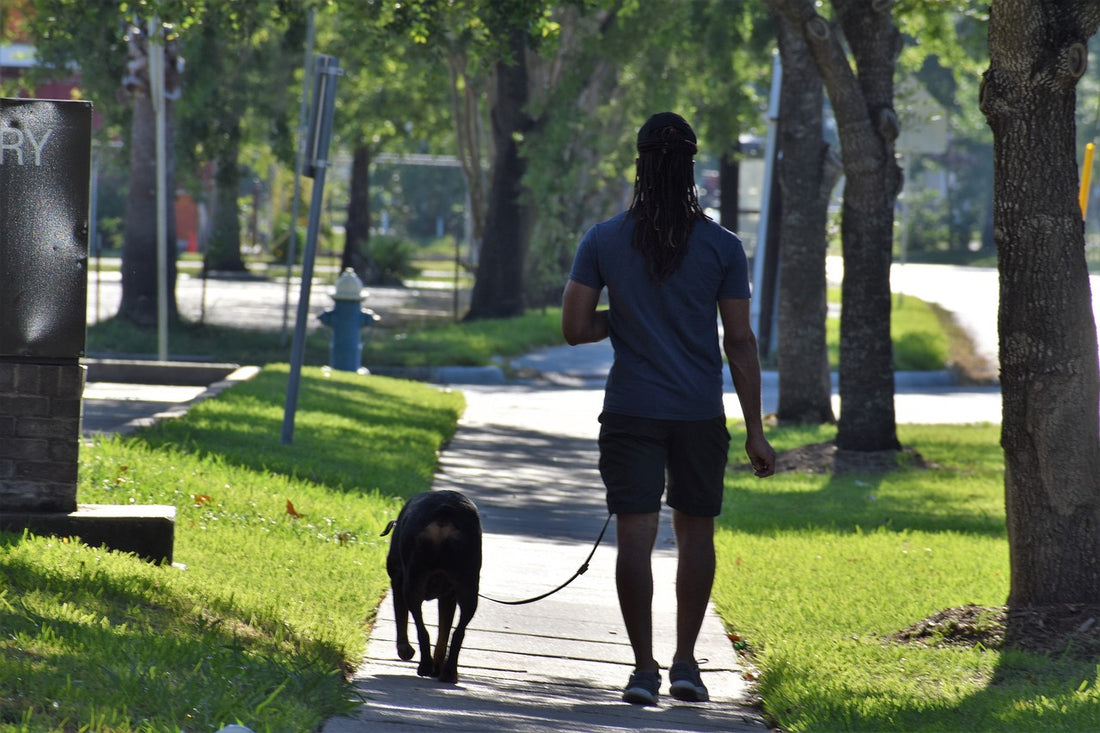Welcome to the wonderful world of leash training, where every step becomes a dance of connection between you and your furry friend. In this guide, we'll explore the art of leash training with warmth, positivity, and a dash of patience. Whether you're guiding a playful puppy or refining the skills of an adult dog, this journey is about creating a bond that turns every walk into an adventure. So, grab your leash, and let's embark on this paw-some adventure together!
The Importance of Leash Training: A Journey of Connection
Leash training is more than just teaching your dog to walk beside you without pulling – it's a journey of connection, communication, and shared joy. Here's why leash training is a crucial aspect of your pup's well-being:
- Safety First: A well-trained dog on a leash is a safe dog. It prevents them from running into dangerous situations, approaching unfamiliar dogs or people without control, and ensures a secure environment for both you and your furry companion.
- Bonding Experience: Leash training fosters a deeper bond between you and your dog. It's an opportunity for shared experiences, mutual understanding, and a rhythm that turns each walk into a joyful adventure.
- Good Manners: Teaching your dog leash manners reflects on their overall behavior. It enhances their obedience and reinforces positive behavior, making outings enjoyable for both of you.
- Socialization Opportunities: A well-behaved dog on a leash is more likely to have positive social interactions. It opens the door to meeting new people and dogs and experiencing the world harmoniously.
Tips for Successful Leash Training: A Wag-tastic Adventure Awaits
Now, let's dive into practical tips for leash training, turning every walk into a delightful experience:
- Start Early: If you have a puppy, start leash training early. Puppies are like sponges, absorbing information and learning quickly. Begin with short, positive sessions in a safe environment.
- Positive Reinforcement: Use positive reinforcement to encourage good behavior. When your dog walks nicely on the leash, reward them with treats, praise, and affection. Positive reinforcement creates a positive association with leash walking.
- Choose the Right Gear: Invest in comfortable and appropriately sized gear for your dog. A well-fitted harness or collar ensures both safety and comfort. Avoid using retractable leashes, as they can encourage pulling and lack control.
- Practice Patience: Leash training requires patience. If your dog pulls or gets distracted, stay calm. Avoid frustration or harsh corrections. Patience and consistency will yield better results than frustration and negativity.
- Short and Sweet Sessions: Keep training sessions short and enjoyable. Aim for 5-10 minute sessions initially, gradually increasing as your dog becomes more accustomed to walking on a leash. End each session on a positive note.
- Use Tasty Treats: Carry high-value treats during training. Use treats that your dog finds irresistible and reserve them exclusively for leash training. This creates a strong incentive for good behavior.
- Change Directions: If your dog starts pulling, change directions. This disrupts their forward momentum and teaches them to pay attention to your movements. Reward them when they walk nicely by your side.
- Stop and Wait: If your dog pulls, stop walking. Stand still and wait for them to release the tension on the leash. Reward them with treats once they return to your side and continue walking.
- Teach Basic Commands: Incorporate basic commands like "sit" and "stay" into leash training. These commands help reinforce good behavior and establish your role as the leader during walks.
- Be Consistent: Consistency is key in leash training. Be consistent in your expectations, commands, and rewards. Dogs thrive on routine and predictability, so maintain a consistent approach.

Common Leash Training Challenges and Solutions: Navigating the Path Together
Leash training comes with its own set of challenges. Let's explore common hurdles and effective solutions:
-
Challenge: Pulling on the Leash Solution: Stop and Change Directions.
If your dog pulls, immediately stop walking. Change directions, and reward them when they come back to your side. This teaches them that pulling leads to a pause in the walk, while walking nicely results in forward movement. -
Challenge: Distractions and Excitement Solution: Use Treats and Redirect Focus.
If your dog gets excited or distracted, use tasty treats to redirect their focus back to you. Engage in simple commands like "sit" to regain control. Reward them for calm behavior. -
Challenge: Reactivity to Other Dogs or People Solution: Increase Distance and Reward Calm Behavior.
If your dog reacts to other dogs or people, increase the distance between them. Reward calm behavior and gradually decrease the distance over time. Consistent positive experiences will reduce reactivity. -
Challenge: Leash Aggression Solution: Seek Professional Help.
Leash aggression requires careful handling and professional guidance. Consult with a professional dog trainer or behaviorist to address leash aggression safely and effectively. -
Challenge: Overexcitement at the Beginning of the Walk Solution: Practice Calm Beginnings.
If your dog tends to get overly excited at the start of the walk, practice calm beginnings. Ask for a "sit" before putting on the leash and exiting the house. Reinforce the calm behavior with treats. - Challenge: Resistance to Walking on a Leash Solution: Gradual Introductions and Positive Reinforcement.
If your dog resists walking on a leash, start with gradual introductions. Let them get used to wearing the leash indoors first. Use positive reinforcement to associate the leash with positive experiences.
Celebrating Leash Training Milestones: Every Step Counts
|
As you embark on the leash training journey, celebrate the milestones – big and small. Each step taken without pulling, every calm greeting, and every moment of connection is a testament to the success of your efforts. Here are some paw-some moments to celebrate: |
 |
- Walking Nicely on a Loose Leash: Celebrate the joy of walking side by side with your pup without the tension of a tight leash. It's a sign of understanding and cooperation.
- Calm Greetings with Other Dogs and People: When your dog calmly greets other dogs and people on the walk, mark the moment with treats and praise. Positive social interactions are a significant achievement.
- Patient Waiting at Crosswalks: When your dog patiently waits at crosswalks without pulling or becoming overly excited, acknowledge the calm behavior with rewards and affection.
- Responsive to Commands: Celebrate your dog's responsiveness to commands like "sit," "stay," and "come." These commands enhance control and reinforce your leadership during walks.
- Enjoying the Journey Together: The ultimate celebration is enjoying the journey together. You've achieved leash training success when every walk becomes a shared adventure filled with tail wags, sniffing explorations, and the joy of simply being together.
Conclusion: Dancing Through Life, One Leash at a Time
Leash training is a journey of connection, understanding, and shared experiences. As you guide your furry friend through the steps of leash manners, remember that every correction is an opportunity for positive reinforcement, every pause is a chance for connection, and every step is a dance of harmony.
With love, patience, and a sprinkle of treats, you're not just teaching your dog to walk nicely on a leash – you're creating a bond that transforms every walk into a wag-tastic adventure. Here's to the joy of dancing through life, one leash at a time, and the paw-some moments that make every step count. Happy walking! 🐾💕

